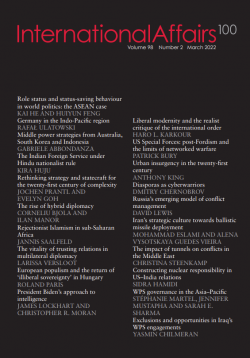Whither the Indo-Pacific? Middle power strategies from Australia, South Korea and Indonesia
Against the backdrop of US–China superpower rivalry in the Indo-Pacific, this article assesses the visions and strategies of the region's middle powers, which remain under-examined at present. First, it briefly traces the boundaries of this research by reviewing the contested nature of the Indo-Pacific concept and the definitional complexities of middle power theory. Second, it provides a novel comparative framework to analyse Australia, South Korea and Indonesia as the region's major middle powers, exploring their goals and strategies. The framework consists of: 1) middle power categorization; 2) interconnectedness with the two superpowers; 3) vision for the Indo-Pacific; 4) resulting regional posture; and 5) capacity to implement the country's goals. Third, it assesses the ensuing implications of this analysis for the region's strategic landscape. It finds that Canberra is now firmly aligned with Washington in balancing against China, as epitomized by the Quad and AUKUS; Seoul is cautiously increasing cooperation with the US, though potentially only to protract its strategic ambiguity; and Jakarta is pursuing strategic autonomy for itself and ASEAN, with the ambitious but precarious goal of creating a ‘third way’ for the Indo-Pacific. Consequently, middle powers seem unlikely to provide an alternative platform for the region's direction in the near future, due to a number of internal divisions. By shedding light on such understudied aspects, this article addresses a gap in the scholarly literature and provides a novel contribution to the understanding of both the diverse roles of middle powers and the Indo-Pacific's evolving strategic landscape.
-
Details
in International Affairs, Vol. 98, No. 2 (March 2022), p. 403-421 -
ISBN/ISSN/DOI:
10.1093/ia/iiab231



